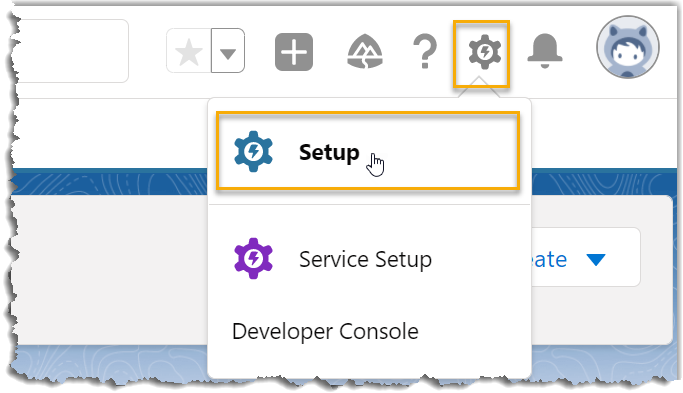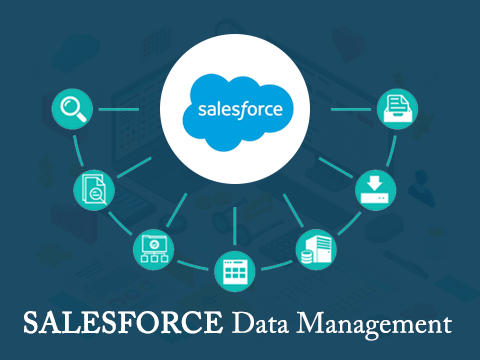Introduction
What is Salesforce CRM?
This section likely provides a brief overview of Salesforce CRM (Customer Relationship Management). Salesforce is a cloud-based platform that offers a suite of tools and services designed to help organizations manage their customer relationships effectively. It includes features for sales automation, marketing automation, customer service, and more. This section may briefly touch upon the key functionalities and advantages of using Salesforce CRM.
Importance of Salesforce CRM Setup and Configuration
Here, the document likely discusses the significance of setting up and configuring Salesforce CRM properly. Effective setup and configuration are crucial for organizations to tailor the CRM platform to their specific needs and workflows. It ensures that the system aligns with the organization’s business processes, enabling a more seamless and efficient use of the CRM tools. This section may elaborate on how a well-configured Salesforce CRM system can contribute to improved productivity, streamlined processes, and enhanced customer experiences.
Setting up and configuring Salesforce CRM is crucial for businesses to leverage its full potential. Proper setup ensures that the platform aligns with the specific needs and workflows of the organization. This involves customizing the system to match business processes, defining user roles and permissions, and integrating with other tools or systems. Effective configuration not only enhances user adoption but also improves the overall efficiency and effectiveness of the organization’s sales, marketing, and customer service operations.
Target Audience
This part is likely to identify the specific group of people or professionals the document is intended for. The target audience for Salesforce CRM setup and configuration could include administrators, developers, business analysts, or any other individuals involved in implementing and maintaining the Salesforce CRM system within an organization. Understanding the target audience helps tailor the content to meet the needs and expectations of those who will be using or managing Salesforce CRM.
Getting Started with Salesforce
Creating a Salesforce Account
This section likely guides users through the process of creating a Salesforce account. Creating an account is typically the first step in using any online platform, and Salesforce is no exception. Users might need to visit the Salesforce website and navigate to the sign-up or registration page. During the account creation process, they would likely provide basic information, such as their email address, name, and possibly some business-related details.
Navigating the Salesforce Interface
Once users have created their Salesforce accounts, they need to understand how to navigate the platform’s interface. The Salesforce interface is the graphical user interface (GUI) that users interact with to access various features and functionalities. This section could cover topics like the layout of the dashboard, how to navigate between different modules or sections, and where to find essential tools and options.
Once your account is set up, you’ll be introduced to the Salesforce interface. This section of the guide will help you understand how to navigate through the platform. Salesforce usually has a user-friendly interface, but for beginners, it’s essential to learn about the main sections, tabs, and navigation options. This could include elements like the home dashboard, search bar, and different modules or applications available in Salesforce.
Understanding Salesforce Objects
In the context of Salesforce, “objects” refer to the various data entities or components within the platform. Salesforce uses a relational database structure, and each object represents a specific type of information. Examples of objects in Salesforce include Leads, Contacts, Opportunities, and Cases. Understanding these objects is crucial for effectively managing and organizing data within the platform. This section might cover how to work with these objects, create new records, edit existing ones, and navigate relationships between them.
Salesforce CRM Setup
Certainly! The given points outline key aspects of setting up Salesforce CRM (Customer Relationship Management). Let’s delve into each of these components:
Setting Up Company Information
Setting up company information is crucial as it establishes the foundation for your Salesforce instance. This involves entering essential details about your organization, such as the company name, address, industry, and other relevant information. This data is often used in various Salesforce features and can be displayed on reports and dashboards. It’s the first step in personalizing Salesforce to align with your business identity.
Customizing User Interface
Customizing the user interface (UI) in Salesforce ensures that the platform is tailored to meet your organization’s specific needs and preferences. This can include adjusting page layouts, creating custom fields, and modifying record types. The goal is to optimize the interface so that users can navigate through Salesforce efficiently and access the information they need with ease.
Managing Users and Permissions
User management is a critical aspect of Salesforce setup. This involves creating user accounts, assigning roles, and defining permissions. Roles and permissions control what data and functionality each user can access within the CRM. By properly managing users and their permissions, you ensure that individuals have the right level of access to information and features based on their roles and responsibilities within the organization.
Security Settings and Access Controls
Salesforce provides robust security features to safeguard your data and ensure compliance with privacy regulations. This includes setting up password policies, enabling multi-factor authentication, and configuring IP restrictions. Access controls are established through profiles, roles, and sharing rules, defining who can view, edit, or delete specific records. Implementing effective security settings is essential for maintaining the integrity and confidentiality of your CRM data.
Integrating Salesforce with Other Systems
Integrating Salesforce with other systems is crucial for streamlining business processes and ensuring a seamless flow of information across different platforms. This can involve connecting Salesforce with marketing automation tools, ERP systems, or other third-party applications. Integration allows data to be shared across systems, eliminating silos and providing a comprehensive view of customer interactions. This step enhances the efficiency of your organization by reducing manual data entry and improving overall data accuracy.
The Salesforce CRM setup process involves configuring company information, customizing the user interface, managing users and permissions, establishing security settings, and integrating Salesforce with other systems. Each of these components contributes to creating a tailored and efficient CRM system that aligns with the specific needs and workflows of your organization.
Data Management in Salesforce
Creating and Managing Records
Creating and managing records is a fundamental aspect of Salesforce data management. In Salesforce, records represent individual pieces of data, such as a contact, account, opportunity, or any other custom object. Users can create new records, update existing ones, and delete records as needed. Salesforce provides a user-friendly interface to input and modify data, making it easy for users to interact with the system and keep records up-to-date.
Importing and Exporting Data
Importing and exporting data in Salesforce is crucial for mass updates and data migration. Users can import large sets of data into Salesforce using tools like Data Import Wizard or Data Loader. This is particularly useful when transitioning from another system or updating existing records in bulk. Exporting data allows users to create backups, analyze information in external tools, or share data with stakeholders in different formats. Salesforce supports various export formats like CSV (Comma Separated Values) and Excel.
Data Deduplication and Cleansing
Data deduplication involves identifying and eliminating duplicate records within Salesforce. Duplicate records can lead to confusion, errors, and inefficiencies. Salesforce offers tools and features to help prevent and manage duplicates. Administrators can set up duplicate rules, which automatically identify potential duplicates based on specific criteria. Data cleansing involves maintaining the quality and accuracy of data by identifying and correcting errors, inconsistencies, or outdated information. Regular data cleansing activities contribute to a more reliable and trustworthy database.
Data Validation Rules
Data validation rules ensure that data entered into Salesforce meets specific criteria and complies with business requirements. These rules help maintain data integrity and prevent the entry of incorrect or incomplete information. For example, a validation rule may enforce that a phone number field contains only numeric characters. If a user attempts to save a record with invalid data, Salesforce will display an error message, prompting the user to correct the information before proceeding. Validation rules are customizable and can be tailored to fit the unique needs of an organization.
Effective data management in Salesforce involves creating and managing records efficiently, importing and exporting data seamlessly, implementing strategies for deduplication and cleansing, and enforcing data validation rules to maintain data accuracy and reliability. These practices contribute to a clean, organized, and trustworthy Salesforce database, supporting businesses in making informed decisions based on reliable data.
Customizing Salesforce Objects
Creating Custom Objects:
In Salesforce, an object is a table in the database that stores data. While standard objects come pre-built with the platform (e.g., Accounts, Contacts, Opportunities), users often need to store specific types of information unique to their business. Creating custom objects allows users to define their own data structure tailored to their needs. This could include creating objects for tracking information like projects, events, or any other specific business entity.
Fields and Relationships:
Once a custom object is created, it needs fields to capture and store information. Fields are equivalent to columns in a database table. Users can define various types of fields (text, number, date, etc.) to store different kinds of data. Relationships, on the other hand, define how objects are connected. For example, you might establish a relationship between a custom “Project” object and a standard “Account” object to associate projects with specific accounts.
Page Layouts and Record Types:
Page layouts control the organization of fields, custom links, and related lists on an object’s record pages. Customizing page layouts enables users to tailor the user interface to display relevant information based on roles, profiles, or record types. Record types allow users to define different sets of picklist values, page layouts, and business processes for different scenarios within the same object. For instance, you might have different record types for “High Priority” and “Low Priority” projects, each with its own page layout.
Custom Apps and Tabs:
Custom apps in Salesforce are collections of tabs that work together to provide a seamless experience for users. Tabs represent different objects or functions within an app. By creating custom apps and tabs, users can streamline their interface and provide a more focused and efficient experience for specific users or business processes. This is particularly useful for tailoring the Salesforce environment to match the unique workflows and requirements of different departments within an organization.
Workflow Automation
Introduction to Workflow Rules:
Workflow rules are a set of criteria and triggers that automate the execution of certain actions in a system or application. These rules define a sequence of steps to be followed when specific conditions are met. In the context of workflow automation, these rules help streamline and optimize business processes by automating repetitive tasks, reducing manual effort, and ensuring consistency in how tasks are handled.
Setting Up Workflow Rules:
This section likely covers the process of creating and configuring workflow rules within a system. Setting up workflow rules involves defining the conditions that trigger the workflow, specifying the actions to be taken when those conditions are met, and configuring any additional parameters or criteria. Users typically interact with a user-friendly interface or platform to create these rules, allowing for customization based on the specific needs of the organization.
Workflow Actions and Alerts:
Once a workflow is triggered, there needs to be a set of actions and alerts that follow. Workflow actions are the specific tasks or operations that the system performs automatically in response to the defined conditions. Alerts, on the other hand, notify relevant stakeholders about the status or changes in the workflow. This can include sending emails, generating notifications, updating records, or any other predefined action that helps maintain the flow of the business process.
Process Builder Overview:
Process Builder is likely a specific tool or module within a workflow automation system. It provides a visual interface for users to define and customize complex business processes. This might involve multiple steps, conditions, and actions. The Process Builder allows users to create more advanced workflows beyond what basic workflow rules might cover. It often includes a graphical representation of the process flow, making it easier for users to understand and modify the logic of their workflows.
Best Practices for Salesforce CRM Setup and Configuration
User Adoption Strategies:
- Training Programs: Conduct comprehensive training programs to educate users on Salesforce features and functionalities. This can include both initial training for new users and ongoing training for updates and new features.
- User Engagement: Foster a culture of engagement and collaboration. Encourage users to provide feedback, share success stories, and address concerns. This helps in creating a positive environment around Salesforce usage.
- Executive Sponsorship: Having strong executive support can significantly boost user adoption. Ensure that leadership is actively involved in promoting the use of Salesforce and emphasizes its importance to the organization.
- User-Friendly Interface: Customize the Salesforce interface to align with the organization’s workflows and make it user-friendly. Simplify processes to reduce the learning curve for new users.
Data Governance and Security Best Practices:
- Data Quality Standards: Establish and enforce data quality standards. This involves defining rules for data entry, ensuring consistency, and periodically cleaning and updating records.
- User Permissions: Implement strict user access controls. Define roles and permissions based on job responsibilities to restrict access to sensitive information and ensure data security.
- Regular Audits: Conduct regular audits of data to identify and rectify inconsistencies, inaccuracies, or outdated information. This helps in maintaining the accuracy of data over time.
- Data Backups: Regularly back up data to prevent data loss in case of unforeseen events. Have a robust data recovery plan in place to quickly restore information if needed.
Performance Optimization:
- Indexing: Properly index fields that are frequently used in searches or reports. This speeds up data retrieval and enhances overall system performance.
- Limiting Customizations: While customization is a strength of Salesforce, excessive customization can impact performance. Strike a balance between customization and system performance by prioritizing essential features.
- Regular Monitoring: Continuously monitor system performance using Salesforce monitoring tools. Identify and address any bottlenecks or issues promptly to maintain optimal performance.
Continuous Improvement:
- Feedback Mechanism: Establish a feedback loop with users to gather insights on system usability, challenges, and suggestions for improvement. Use this feedback to make informed enhancements.
- Regular Updates: Stay current with Salesforce updates and new features. Regularly update the system to leverage new functionalities and improvements introduced by Salesforce.
- Key Performance Indicators (KPIs): Define and track KPIs related to CRM usage, user satisfaction, and business outcomes. Use these metrics to measure the success of the CRM system and identify areas for improvement.
Salesforce Automation Tools
Salesforce Automation Tools are features and functionalities within the Salesforce platform that help automate various business processes, streamline workflows, and improve overall efficiency. In the context you provided, four specific aspects of Salesforce Automation Tools are highlighted: Apex Triggers, Apex Classes and Batch Processes, Scheduled Flows, and Using Flow Builder for Automation.
Introduction to Apex Triggers:
- Definition: Apex Triggers are pieces of code written in the Apex programming language that execute before or after specific data manipulation events occur, such as the insertion, update, or deletion of records.
- Purpose: Triggers enable developers to customize and extend Salesforce’s standard functionality by allowing them to automate business processes, enforce data consistency, and perform additional actions when certain events take place.
- Example Use Cases: An Apex Trigger might be used to automatically update related records, enforce complex business rules, or integrate Salesforce with external systems.
Apex Classes and Batch Processes:
- Apex Classes: These are similar to classes in other programming languages and are used to define methods, properties, and behavior in the Apex language. Apex classes can be invoked by triggers or other processes to perform specific tasks.
- Batch Processes: Batch processing in Salesforce involves the asynchronous execution of code on a large set of records. Batch classes are written in Apex and are useful for processing large volumes of data in chunks.
- Use Cases: Apex Classes and Batch Processes are employed when complex logic or operations need to be performed on a set of records, and it’s not practical to handle them synchronously.
Scheduled Flows:
- Definition: Scheduled Flows allow you to automate the execution of flows at a specific time or on a recurring basis. Flows in Salesforce are visual workflows that can automate business processes by guiding users through screens and performing backend operations.
- Purpose: Scheduled Flows help automate repetitive tasks, ensuring that specific actions are taken at predetermined times, reducing manual effort and improving consistency.
- Examples: Sending automated follow-up emails, updating records at regular intervals, or performing data maintenance tasks on a schedule.
Using Flow Builder for Automation:
- Flow Builder: Flow Builder is a visual design tool in Salesforce that allows users to create flows by dragging and dropping elements onto a canvas. Flows created using Flow Builder automate business processes and can include screens, decisions, loops, and integrations.
- Automation Capabilities: Flow Builder is versatile and can be used for various automation needs, from simple tasks like updating fields to more complex processes involving user interactions and third-party integrations.
- Advantages: Flow Builder is designed to be user-friendly, enabling admins and non-developers to create powerful automation without the need for extensive coding skills.
These Salesforce Automation Tools provide a comprehensive set of capabilities for developers and administrators to automate and enhance business processes within the Salesforce platform. They cater to different scenarios and complexity levels, allowing for flexibility in implementing automation solutions based on specific business requirements
Conclusion
In conclusion, mastering Salesforce CRM setup and configuration is not just a technical endeavor; it’s a strategic investment in the success of your business. By following this comprehensive guide, users can unlock the full potential of Salesforce, drive innovation, and stay ahead in the competitive landscape of customer relationship management.
Salesforce provides a powerful feature called “Branding Sets” that allows you to customize the look and feel of the application. You can upload your company’s logo, choose colors, and create a personalized theme.
Profiles control users’ access to objects, fields, and functions, while Roles determine the level of visibility users have to records. Profiles are more about permissions, whereas Roles are about data visibility.
Salesforce provides a data import wizard and data loader tools to facilitate data imports. Users can choose the appropriate method based on the volume of data and their specific requirements.
Yes, Salesforce offers a powerful automation tool called Process Builder. With it, you can automate standard internal procedures to save time across your org.
Validation rules ensure that data entered into Salesforce meets the criteria you specify. They are useful for maintaining data integrity and enforcing data quality standards.










